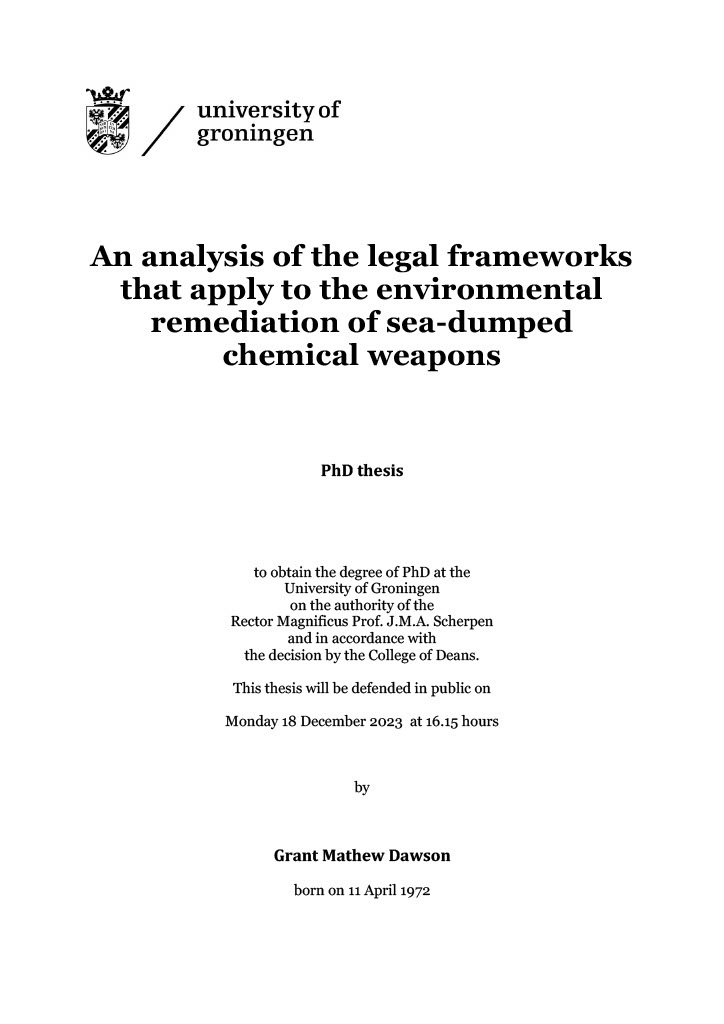
An analysis of the legal frameworks that apply to the environmental remediation of sea-dumped chemical weapons
Following the two world wars of the twentieth century, governments decided to dispose of unwanted chemical weapons by dumping them into the oceans of the world. In this PhD thesis, Grant Dawson addresses the following question: What are the past and present legal frameworks that apply to sea-dumped chemical weapons (SDCWs) and do states have a responsibility under international law to protect the marine environment against their adverse effects.
The problem is first placed in its historical, legal, and scientific context. Scientific research activities have been conducted for the last few decades and up to the present day in order to define the scope of the situation. In some areas, such as the Baltic Sea where the research has been the most developed, scientists have determined, through verifiable and empirical research, that dumped munitions are causing damage to the marine ecosystem.
A systematic and doctrinal legal analysis is conducted in order to identify the law that is applicable to the subject, such as the Chemical Weapons Convention, the United Nations Convention on the Law of the Sea, the London Dumping Convention and Protocol, and the regional seas conventions. Customary international law is also investigated and found to be applicable to the environmental remediation of SDCWs, especially the principles of no-harm, prevention, precaution, cooperation, and common but differentiated responsibilities and respective capabilities. Where deficiencies in the law are identified, legal solutions are offered. Moreover, there are practical approaches that can be pursued to address the problem. Provided that the technology and resources can be mobilised, the problem of SDCWs is a finite one, with finite solutions.
In order to facilitate research, cooperation, and funding for the ongoing scientific activities to deal with SDCWs, an international organisation could serve as a coordinating agency for programmes in this area and could administer a global trust fund to centralise and facilitate voluntary financial contributions to technical and continued scientific research. The goal of raising and safely destroying a chemical munition or remediating such a test munition in situ and under international verification standards in the next five years would be a modest, concrete objective that could be the first step to implementing tangible progress. Such a pilot project could pave the way for additional cleanups, and remediation efforts could be slowly and sustainably scaled-up. There are also a variety of economic drivers that could be employed by states and the private sector to stimulate activity in the area of remediating SDCWs, such as new approaches to tender processes for offshore projects, government subsidies (e.g., bounties on recovered and remediated munitions), and changes to permitting requirements to mandate the cleanup of SDCWs. It is time for us to come to grips with the environmental legacy of past dumping of chemical weapons into the ocean - by identifying and analysing the problem, offering guidance, and providing hope to both ourselves and succeeding generations so that we can tackle and solve the problem of SDCWs and restore balance to the ecosystem that we share with the other creatures of the planet.
Dawson defended his PhD thesis on the 18th december 2023, at the Rijksuniversiteit Groningen.
Supervisors: prof. Frans Nelissen en prof. Marcel Brus.

